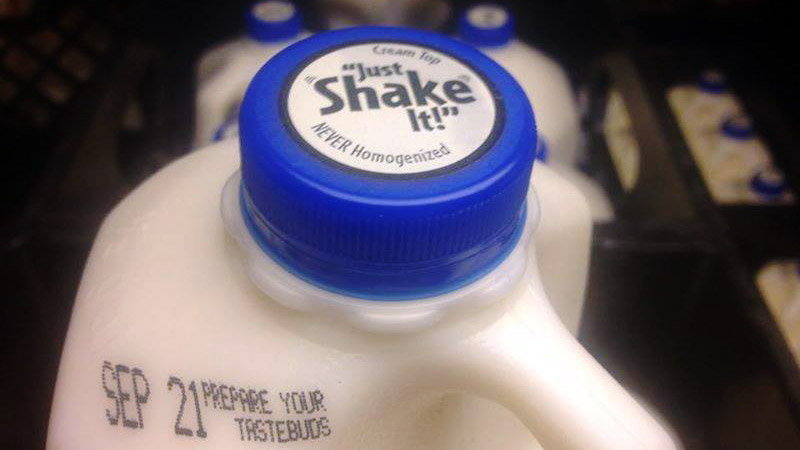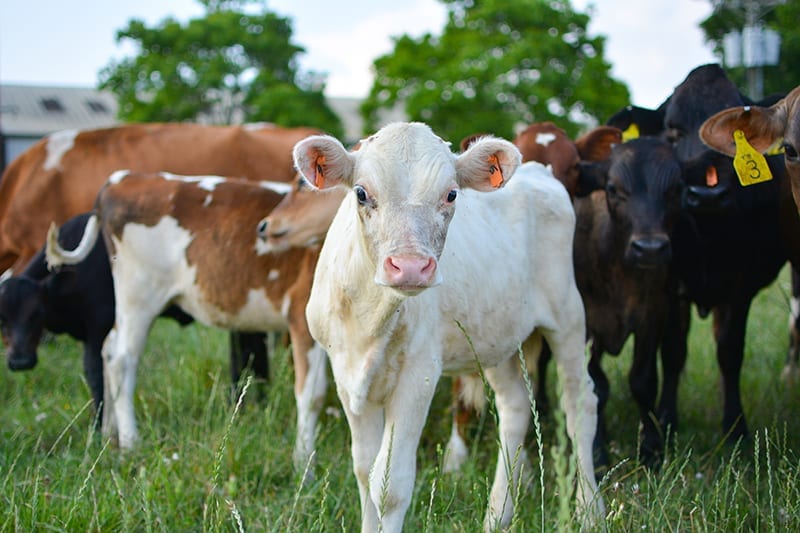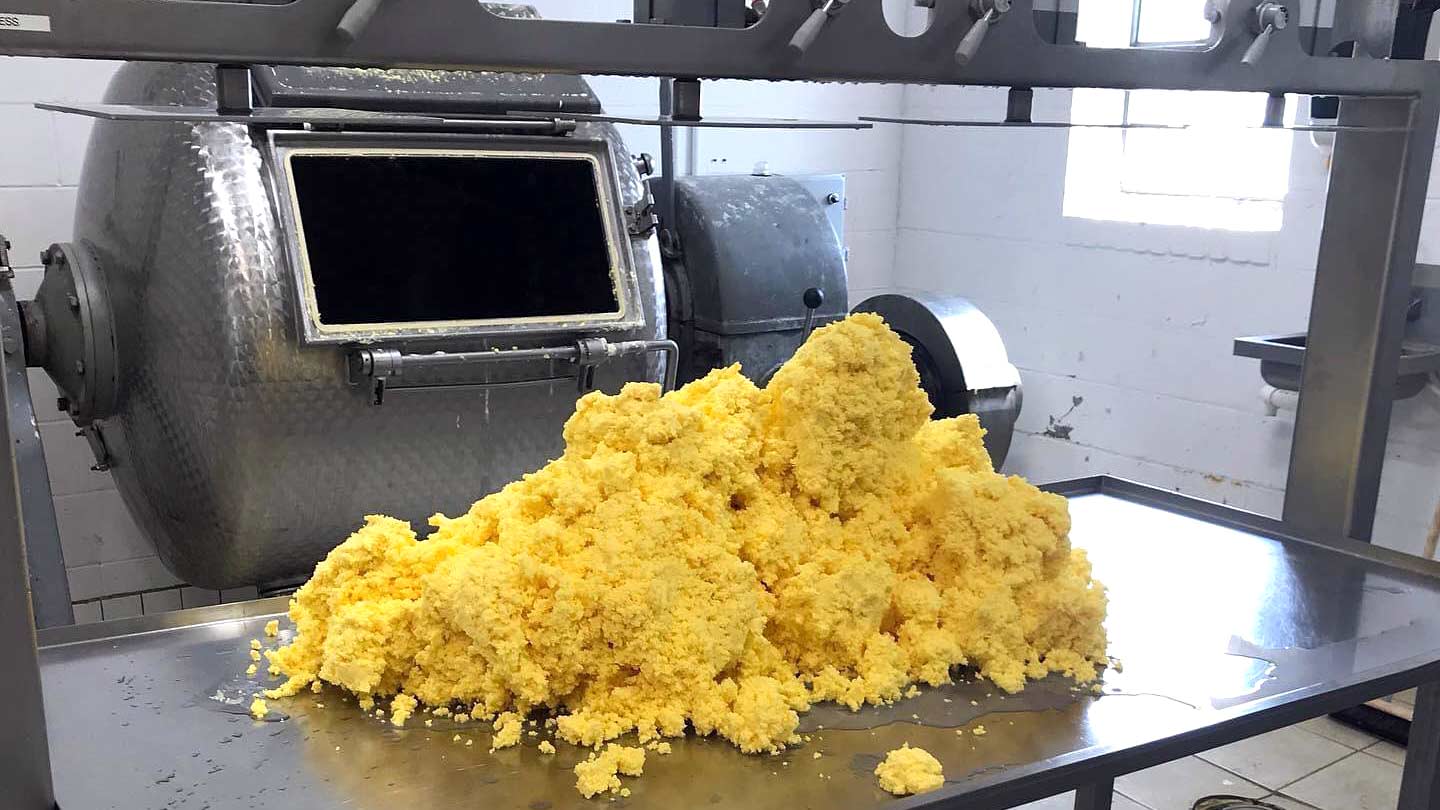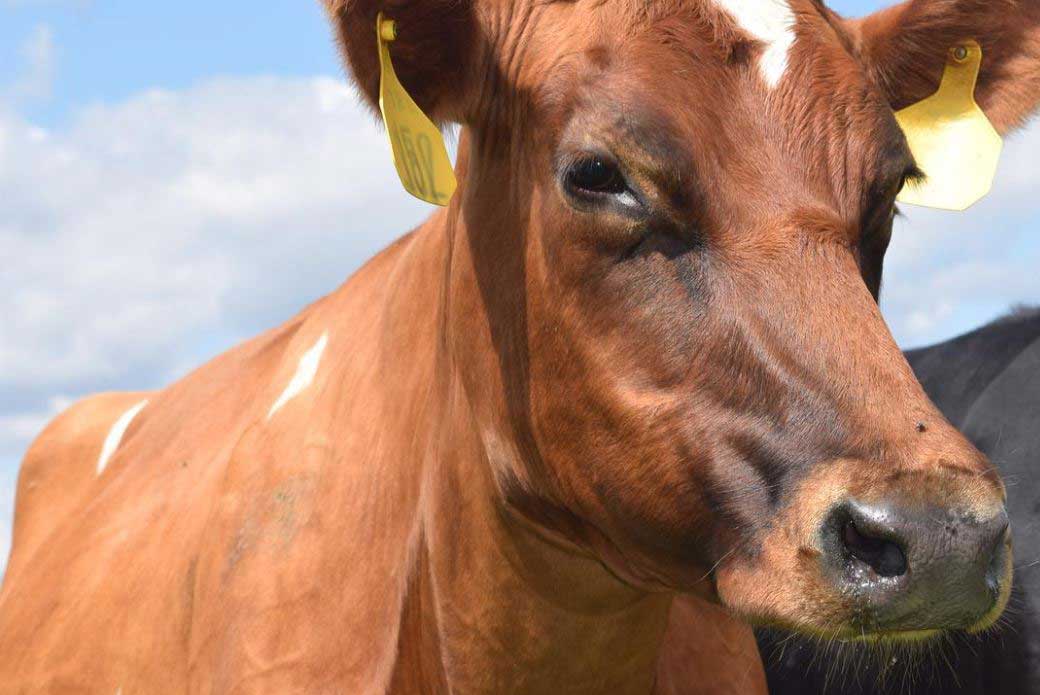A very nice write up on the nutrition of milk and how it can be destroyed by pasteurization. The bottom line if you can’t get raw milk, look for low temperature pasteurization and avoid homogenized milk that can also hide some other processed ingredients.
https://workingcowsdairy.com/is-pasteurized-milk-healthy/
by Kent Dagnall
Raw Milk from grass-fed cows can be one of the most nutrient-rich whole foods available, but there is one question we hear all the time: Are Pasteurized Dairy Products Less Healthy? To make the best choices, let’s look at the differences between mass produced and pasture-raised dairy products, then at the effects of low temperature pasteurization, ultrapasteurization, homogenization, and even more highly-processed foods exploited by the mainstream dairy industry. Finally we’ll explore your options as a consumer in the USA and how you can make your voice heard to protect the freedom to choose raw dairy products.
Grass-Fed Milk Is Always A Healthy Choice
Cows who grow up pasture-raised follow their natural instincts and absolutely love fresh green grass and sunshine. That’s one reason why Alabama is the perfect place for our family’s organic dairy farm. It is true that cows have 4 stomachs and ‘chew their cud’ to extract maximum nutrition from plants we humans are unable to digest. Since they evolved eating grass, cows maintain very efficient methods to convert the molecules plants use to make energy from sunlight into vitamins essential for animal life.
Carotenoids that make grass green (and carrots orange) are converted into retinol Vitamin A, which improves vision, strengthens bones, and helps our immune systems. Grass-fed cows in southern states produce large amounts of Vitamin D3 from sunlight and we benefit from drinking their milk when we can’t get enough sun ourselves. Similarly, Vitamin K1 in fast-growing green grass is needed for the production of Vitamin K2 in dairy products.
Cows in commercial dairies located farther north can’t access green grasses year round , so they are Vitamin A and K2 deficient, and winter sunlight is not strong enough to provide adequate vitamin D. As we’ll discover below, without synthetic vitamins added to this kind of industrialized milk, most of the nutrients it does contain would be indigestible.
Enzymes
Milk provides every nutrient a baby needs to thrive, including the enzymes to fully digest the proteins, fats, and complex carbohydrates it contains. Most humans can drink milk from other animals as children. Some of our ancestors in Europe, Siberia, and Central Africa benefited from a mutation allowing them to digest dairy even in adulthood. In the US, an estimated 65% of the adult population now carries the gene to digest milk and the remaining 35% are missing the lactase enzyme. Those who cannot produce lactase themselves can often benefit from raw dairy products since they still contain the enzyme. Pasteurization destroys some of the natural enzymes in milk.

Polyunsaturated Fats
Fat is used by our bodies in different ways depending on the length of the tail end – or ‘omega’ – on each fatty acid molecule. Changing the length, which happens when milk is homogenized, also changes whether these molecules behave in ways that are positive or negative for our health. It is estimated that a traditional diet including raw dairy products once contained equal amounts of Omega-3 and Omega-6 fats, resulting in stronger bones, hearts, teeth, and muscles even into old age. Unfortunately, the American diet based on grain-fed animals has an unbalanced Omega-6 ratio up to 16x too high, causing chronic inflammation, low bone density, autoimmune disorders, cardiovascular problems, and cognitive decline. Grass-fed organic milk and pasture-raised dairy products have an ideal 1:1 ratio of Omega-6 to Omega-3, compared to the out-of-balance 6:1 of homogenized grain-fed milk.
Fat-Soluble Vitamins
Balanced polyunsaturated and saturated fats deliver all of the fat-soluble vitamins critical for building new cells, defending the body from disease, controlling inflammation, and increasing mental performance. Green grass provides all the nutrients that cows need to produce large quantities of Vitamins A, D3, and K2. Since our cows eat nothing but Certified Organic grasses all year around, their milk and cream are some of the best sources of fat-soluble vitamins found in any whole foods.
Read more about the ‘salad bar’ of native grasses our cows graze on and how they work to regenerate the soil every day: What Does A “Working Cow” Do?
Retinol Vitamin A
Retinol is the form of Vitamin A that our bodies can use to repair cells and help keep our vision sharp. Beta-carotene is another form of Vitamin A found in plants where it is essential to turn sunlight into energy. Working Cows Dairy butterfat (cream) looks so yellow, especially in Spring, because the huge amount of beta-carotene our cows eat is made into retinol. Dairy products from cows who eat fast-growing grass are associated with higher levels of the fat-soluble vitamins A, D3, and K2, so this deep yellow color often indicates the high nutritional value.

Vitamin D3 “the sunshine vitamin”
If you live in any of the northern states or just don’t get enough sun exposure, food is the only source of Vitamin D3. Our reliance on a steady supply of this powerful hormone and fat-soluble activator cannot be overstated. In fact, many health experts suspect that ‘flu season’ is actually the entire population having a Vitamin D3 deficiency during the winter! Lucky for us, animals can produce Vitamin D3 and store it in their fats. Butterfat from grass-fed cows is an excellent whole food source of bioavailable Vitamin D, as retinol.
Vitamin D3 must be kept in balance with K2 (below) to take calcium out of the blood and send it into the bones and teeth where it belongs. Taking Vitamin D3 supplements by themselves can be dangerous without a diet that is also high in naturally-balanced sources of Vitamins A and K2 from pasture-raised dairy products, eggs, and meat.

Vitamin K2 “Activator X”
Calcium-regulating Vitamin K2 is the most recently discovered and misunderstood of all vitamins, but it plays a critical role in our health. Your body needs calcium to grow healthy cells for strong bones and teeth. On the other hand, when too much calcium shows up in blood and soft tissues it can cause hardening of the arteries and severe nervous system disorders. When we are healthy, Vitamins A and D3 work together to bond with calcium and then get ‘directed’ by Vitamin K2 to strengthen the bones and teeth.
Vitamin K2 is the famous ‘Activator X’ described by Weston Price in his groundbreaking 1939 book Nutrition and Physical Degeneration. Japanese researchers in 2004 discovered Vitamin K has two forms, and in 2005 Chris Masterjohn confirmed that K2 exhibits the same function and is also found in all the foods that Dr. Price first theorized more than 60 years earlier. Two types of Vitamin K2 are beneficial, MK4 and MK7, and both are found in dairy products. Butter, organ meats, and fats from grass-fed animals are naturally high in MK4. Bacteria make MK7 during fermentation, so it is found in organic grass-fed cheeses, and also in yogurt, sauerkraut, kimchi, and natto.
Why We Never Homogenize
First, some history… by the early 1900’s American society had transformed from rural towns with local dairies to massive cities requiring the unhygienic distribution of vast quantities of milk. As you would expect in the days before refrigeration or public sanitation, widespread disease followed. Pasteurization was useful in preventing illness and lengthening the shelf life of dairy products. The problem is that pasteurizing milk also kills the beneficial lactic acid bacteria that evolved to help us digest food.
Very high heat also deforms the proteins in milk so they are less nutritious and sink to the bottom. To combat separation of pasteurized milk, the dairy industry invented yet another process – homogenization. By forcing pasteurized milk through tiny tubes, the fats and proteins are broken down so they stay mixed together longer. This is why grocery store milk doesn’t have a layer of cream on top, it has been altered at the molecular level.
Even though sanitization is now taken seriously, the FDA still bans all raw dairy products and each state has passed laws regulating pasteurization. Until recently, pasteurization could only be accomplished economically by large scale dairy processors, so this policy effectively destroyed America’s family-owned dairy farms.
At Working Cows Dairy, we follow strict USDA Organic and FDA regulations, but we chose to gently pasteurize at the lowest temperature and shortest time allowed for Grade A milk. Plus, we NEVER homogenize any of our dairy products, they are always left as nature intended with a thick layer of vitamin-rich cream on top.

Low Temperature Pasteurization Benefits
Low temperature vat pasteurization heats milk to kill unwanted bacteria but preserves the healthy Omega-3 fatty acids, essential minerals, and fat-soluble vitamins A, D3, and K2. You just want to make sure the milk has not been homogenized.
A large segment of the US population now carries the gene needed to digest dairy products as adults. However, for people who have trouble digesting dairy products, it is true that even low temperatures will break down some of the helpful enzymes. Along with killing off any beneficial lactic acid bacteria, this loss of enzymes is unavoidable under current FDA policy.
Ultra-Pasteurized Milk Dangers
Ultra-pasteurized milk is heated beyond the boiling point and under far more pressure than it could ever reach in nature. At this stage, proteins in milk are deformed so much that they are missing amino acids required for life. The healthy Omega-3 fatty acid ratio is unbalanced by inflammatory Omega-6. Fat-soluble vitamins are also lost, including vitamin K2, and vitamins A and D must be added to give ultra-pasteurized milk any nutritional content. Even with these synthetic vitamins, poor absorption of calcium and deficiencies in the fat-soluble vitamin activators A, D3 and K2 are often problems for people who must rely on ultra-pasteurized milk.
Spray-Dried & Freeze-Dried Milk
Even more misleading, in our opinion, is the FDA rule that allows spray-dried milk to be labeled simply as ‘milk’ and added into ultra-pasteurized dairy products. Consumers do not know if what they are buying is real food. Spray-dried and freeze-dried milk are not nutritious whole foods, they are highly-processed and should be avoided. It is clear that children who are fed a diet based on powdered milk suffer tooth decay, weak bones, facial deformation, rickets, and developmental problems. Yet the number one ingredient in school lunch chocolate milk is often spray-dried milk powder, followed by high fructose corn syrup.
Summary
Grass-fed milk is always a healthier choice because cows evolved to turn grass into the essential vitamins A, D3, and K2. When milk is pasteurized it loses some enzymes and beneficial bacteria are killed along with any unwanted germs. During low-temperature vat pasteurization, milk is only heated for the mimimum temperature and time allowed for Grade A dairy so it retains complete proteins, Omega-3 fatty acids, calcium, trace minerals, and fat-soluble vitamins. Most commercial dairies also homogenize milk which disturbs the fatty acid balance, making it unhealthy. Other milk is ultra-pasteurized, or filled with spray-dried additives that are no longer whole foods, and they have been shown to promote inflammation, bone loss, cancer, cognitive decline, and tooth decay. Working Cows Dairy products are naturally high in nutrients and low-temperature vat pasteurized to preserve the healthful qualities and delicious flavor of grass-fed butter, milk, and cheese.
Grass-fed Dairy Products Contain:
- Calcium, Essential Minerals, Vitamins A, D3, and K2
- Cancer-fighting CLA and Omega-3 Fatty Acids
- Nutritionally-Complete A2 Protein
Low-temp Vat Pasteurized Milk:
- Kills unwanted germs, but also beneficial lactic acid bacteria
- Preserves the unique flavor of grass-fed milk and cream
- Protects calcium, CLA, Omega-3 fatty acids, and fat-soluble vitamins
- Does no damage to proteins
- Needs no vitamin supplements
Ultra Pasteurized Milk:
- Is a highly-processed food.
- Might have spray-dried or freeze-dried milk powder added for color.
- Contains no natural Vitamin A, D3, or K2.
- Must be supplemented with synthetic vitamins
- Contains harmful heat-damaged proteins
- Has an unhealthy balance of Omega-6 fatty acids
Further Reading:
Christopher Masterjohn, “On the Trail of the Elusive X-Factor: A Sixty-Two-Year-Old Mystery Finally Solved,” Wise Traditions, 2008. https://www.westonaprice.org/health-topics/abcs-of-nutrition/on-the-trail-of-the-elusive-x-factor-a-sixty-two-year-old-mystery-finally-solved/
Christopher Masterjohn, “The Ultimate Vitamin K2 Resource,” ChrisMasterjohnPhD.com, Updated 2020. https://chrismasterjohnphd.com/blog/2016/12/09/the-ultimate-vitamin-k2-resource
Brad Heins, “Grass-fed cows produce healthier milk,” University of Minnesota Extension, 2021. https://extension.umn.edu/pasture-based-dairy/grass-fed-cows-produce-healthier-milk
Alothman M, Hogan SA, Hennessy D, et al. “The ‘Grass-Fed’ Milk Story: Understanding the Impact of Pasture Feeding on the Composition and Quality of Bovine Milk,” Foods. 2019. https://www.ncbi.nlm.nih.gov/pmc/articles/PMC6723057
Dr. Steven Lin. The Dental Diet: The Surprising Link Between Your Teeth, Real Food, and Life-Changing Natural Health. United States, Hay House, 2018.
Sally Fallon Morell, “New Evidence that Processing Destroys Milk Proteins,” Real Milk. 2020. https://www.realmilk.com/new-evidence-that-processing-destroys-milk-proteins/
Dan Zhu, Biniam Kebede, Gang Chen, Kiri McComb, Russell Frew, “Effects of the vat pasteurization process and refrigerated storage on the bovine milk metabolome,” Jrn Dairy Sci, V103, Iss3, 2020, Pages 2077-2088, ISSN 0022-0302, https://doi.org/10.3168/jds.2019-17512. https://www.sciencedirect.com/science/article/pii/S0022030220300527